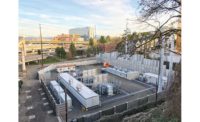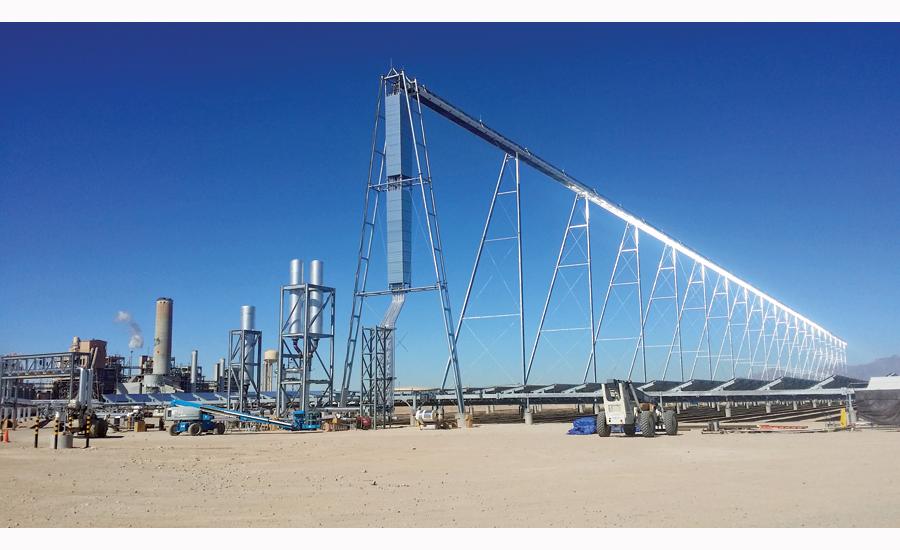Best Project Energy/Industrial: Tucson Electric Power Company, Solar Steam Generator Project

PHOTO: JEAN PAUL CROUZOULON

PHOTO: BILL BROWN: PROJECT SUPERINTENDENT

PHOTOS: BILL BROWN: PROJECT SUPERINTENDENT



The scope of the $2.8-million project centered upon joining lengths of pipe through an elevated platform connected to a boiler system. The system’s boiler produces direct superheated steam generation from a Fresnel array of modular linear reflectors. These reflectors harness the sun’s power by concentrating solar light onto a linear receiver containing nine boiler tubes made of carbon and alloy steels.
Construction began with raising the boiler tower, sun reflectors and receivers to a working height. The components were then installed at a final operating height of 100 ft to 125 ft.
“The pipe runs were assembled on the ground and a temporary deck area and handrail made of scaffolding were added to assist the welders that were required to work at the 100-foot elevations,” says Chuck Agenbroad, project piping superintendent with JB Henderson Construction.
Once key structural components were in place, pipe work began on the boiler to prepare the center power module of the system. Tubing to the receivers and instruments were then set. The final construction stage assembled external piping and in-line instruments.
Before beginning operation, the piping system underwent a final chemical clean including a steam blow to purify the system.
The construction team engaged in detailed weld testing measures to prove the connections could withstand the conditions of the application under the requirements of ASME B31.1 and B31.3 for external and non-external boiler piping.
“Every morning, the project superintendent would give each welder their location assignment,” says Bill Brown, JB Henderson’s project piping superintendent. “Prior to any welding, each had to go down to the QA issue tent and receive their portable ovens of filler material along with a copy of the weld procedure to reference throughout the day. If a procedure was changed or location welds completed, the material had to be returned immediately and logged into inventory,”
To build the pipe run, welders performed approximately 900 two-pass welds.
Although complex, the construction team’s performance delivered the project in a tight, eight-month schedule on a job site subject to intense temperatures and wind. Crews constructed weld tents to block the sun and wind, and workers were encouraged to take additional breaks to maintain energy and focus.
The contractor “employed eight people to manage the tents full time including moving, maintenance and securing as required. The tents were secured to pipe cribbing with rope to ensure consistent stability,” says Agenbroad.
Air conditioners were used inside of designated break trailers to support a cool down; hydration was regularly monitored; and water and energy drinks were provided daily.
Tucson Electric Power Company, Solar Steam Generator Project
Tucson
Key Players
Owner Tucson Electric Power
General Contractor JB Henderson Construction
Structural, Civil and MEP Engineering Power Engineers Inc.
Lead Design Firm Areva
Planner The Planner Center
Subcontractors Western Technologies, Premier NDT Services, Caliber QC, Farwest Insulation Contracting, DeLeon Painting, Granite Construction





